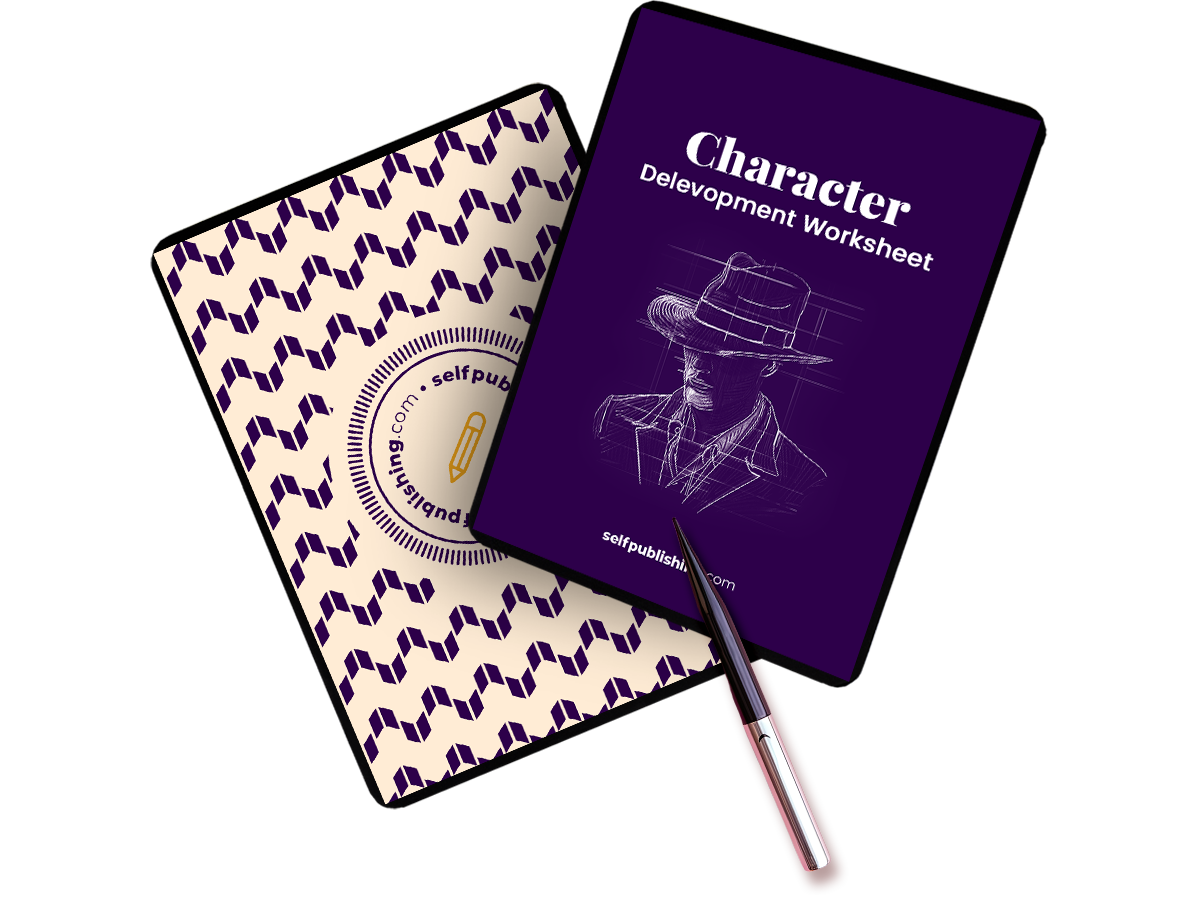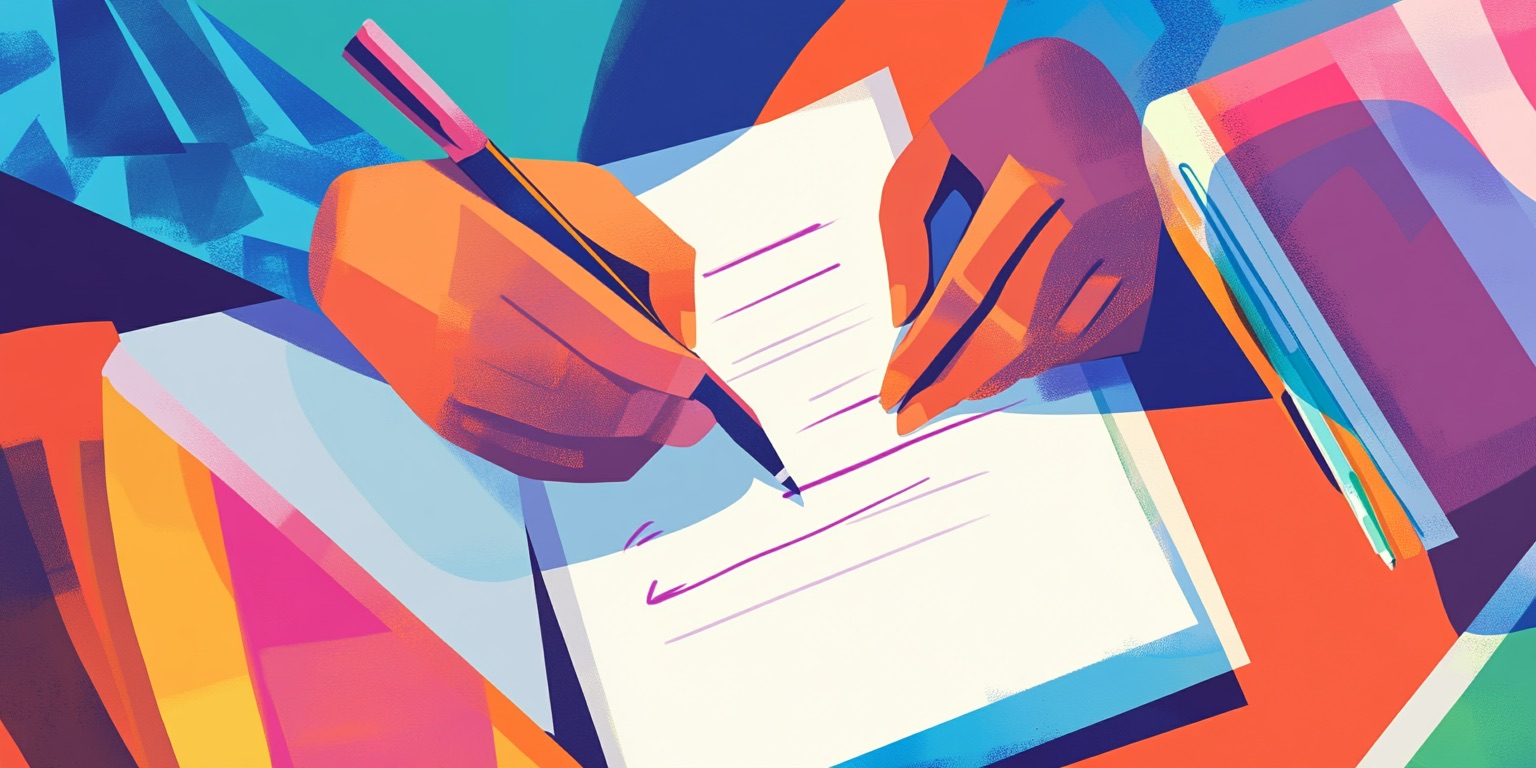A character bio template is a shortcut for developing realistic characters. It’s the key to creating believable protagonists and antagonists that come alive through your writing. Character bio templates include guiding questions to help you shape your main characters as you write.
Remember: writing great fiction starts with writing great characters!
By answering significant questions about your character’s development, not only will you be able to understand a character inside and out, but you’ll also be able to show your readers the depth of your character.
Creating life-like characters goes beyond just plopping your character into the storyline, giving them a name, and describing a few traits.
And it’s not just for fiction – but for non-fiction, too. Are you writing a memoir? A biography? A self-help book using “case studies” or examples of people in particular situations? Experimenting with creative writing prompts?
You’ll want to fill out a character bio template for your main character if you’re writing one of these non-fiction books as well!
Even if your character is modeled after a real person, that’s not enough to make him or her come alive for the reader. As an aspiring author, the first rule of thumb is to fully develop your character. You need to create an individual with a story of their own that readers want to engage and connect with as they read your book.
Your character’s development should not be an afterthought – after all, you’re telling a story, and the story likely centers around the characters.
Invest the time to answer these questions in our character bio template, and you’ll see just how real your character will become.
What is a character bio?
A character bio is a document or template that outlines the biography of a character in a story. Commonly used in the form of a character sheet template, which includes in-depth questions that highlight the character’s traits, descriptions, and journey, the character bio is used as a resource for the writer’s reference.
A character bio template helps the writer keep track of the character’s arc, background, and preferences which then helps the reader understand the character’s dynamics through the story. By creating a character with a past, present, and future, storytellers are able to paint a vivid picture of the character’s behavior and actions as displayed in the story.
The main goal of using a character profile template is to increase the realistic attributes of the character, to ultimately make them more believable and relatable for the reader.
Character bio templates are used mainly by fiction writers and authors, screenwriters, and other storytellers. Character profile templates should be filled out for all main characters in the story, including antagonists, to improve the overall character development.
Why is character development important?
Character development is important because the more developed a character is, the more realistic the character is – and readers want to invest in characters that are believable.
Have you ever been so connected to a book or story that you were devastated when you finished reading it? You were sad to say goodbye to the characters. You wished you could open up the portal to that world forever.
If you’ve experienced that, then you were emotionally invested in the characters and their lives. You connected with them – you felt like you truly knew them. And that’s because the writer did such a phenomenal job developing the character, that they seemed real to you as the reader.
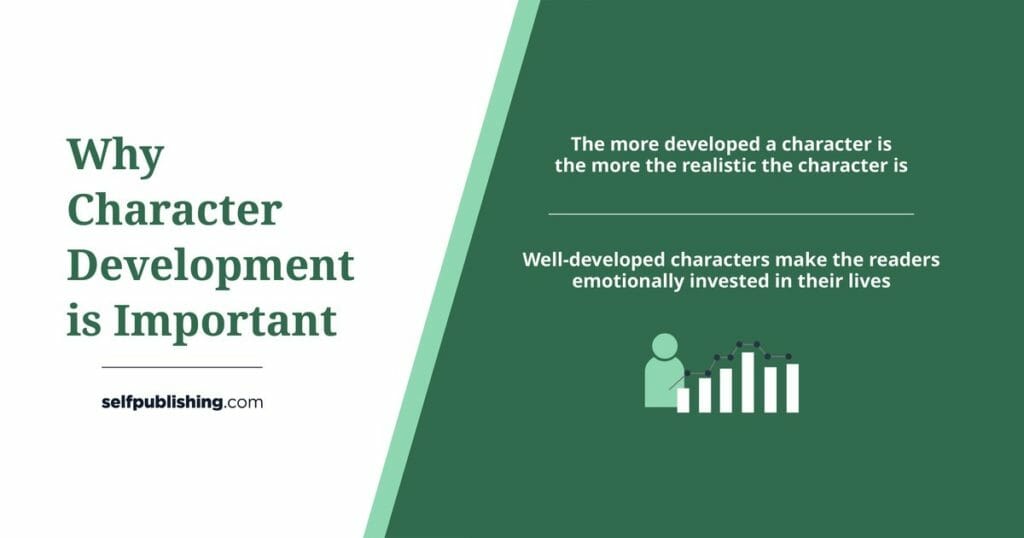
That’s exactly what you want to do with your own writing. You want to write characters that are so fully developed, the reader will become invested in their lives.
And the secret to fully developing characters lies in being able to answer detailed questions about your character, which is how this character bio template will help you.
Top character development tips to use when writing:
- Start with a mind map or outline of your character’s journey in the story.
- Brainstorm the character’s main characteristics as needed for the story’s plot.
- Practice writing about your character to get a solid idea of who the character is.
- Give your character a main goal, purpose, motivation, and flaw.
- Fill out the character bio template to fill in any gaps and get clear on their history and small details.
- Interview your character to build their perspective.
- Complete writing exercises from your character’s perspective to fully develop the character’s mindset.
- Begin writing your story with your fully developed character in mind.
Why should you use a character bio template?
Using a character bio template will help you create realistic characters that your readers will believe in, and connect with.
You should develop a character bio to create believable characters for two reasons.
First, by answering character development questions in a character profile template, you’ll know the character like the back of your hand, which helps you tell your story better.
Second, the character sheet template will help you create an actual individual by painting a comprehensive, detailed picture of who they are – from what they look like to their personality quirks to their biggest mistakes in life.
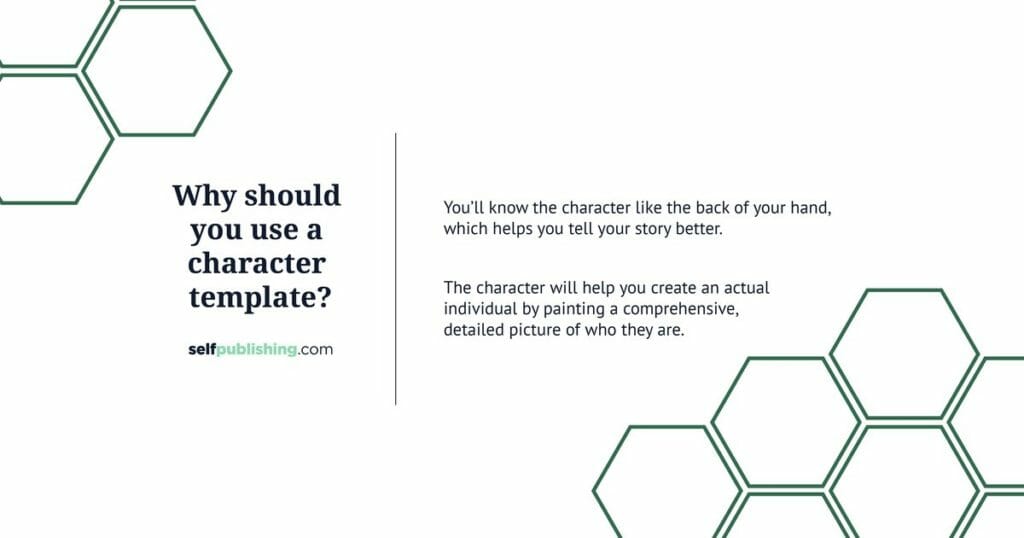
Reasons to use a character bio template:
- To help you tell your story better
- To prevent inconsistencies in details
- To create a life-like character, full of personality with a comprehensive living history
- To use as a reference when incorporating details about your character
- To improve your character’s development
- To help readers connect and relate to your character
- To immerse your reader in your story
What should a character profile include?
A character profile template should include all of the relevant details that the writer needs to incorporate into the story, to fully develop the character.
Some writers use a basic character bio, with only relevant details that show the character’s arc within the story, while other writers use an advanced, comprehensive character bio with specific details about the character’s life, personality, aspirations, and internal and external features.
The type of character profile you include will depend on several factors, such as the type of work you are creating (ex: novel, short story, film), and the type of writer you are (ex: do you need a comprehensive profile, or just a one-page summary?).
At a minimum, you should include the specific details about your character that highlight his or her role in the story, and how they develop within your story.
What to include in your character profile template:
- Character basics such as name and age
- Physical description of the character’s appearance
- The personality traits of the character
- Overview of the character’s health
- Career and education details
- Preferences and motivations of the character
- Description of the character’s family life
- Overview of the character’s main relationships
- Important life stages and milestones
- Character perspectives, outlook, and opinions
- Character’s role in the story’s development
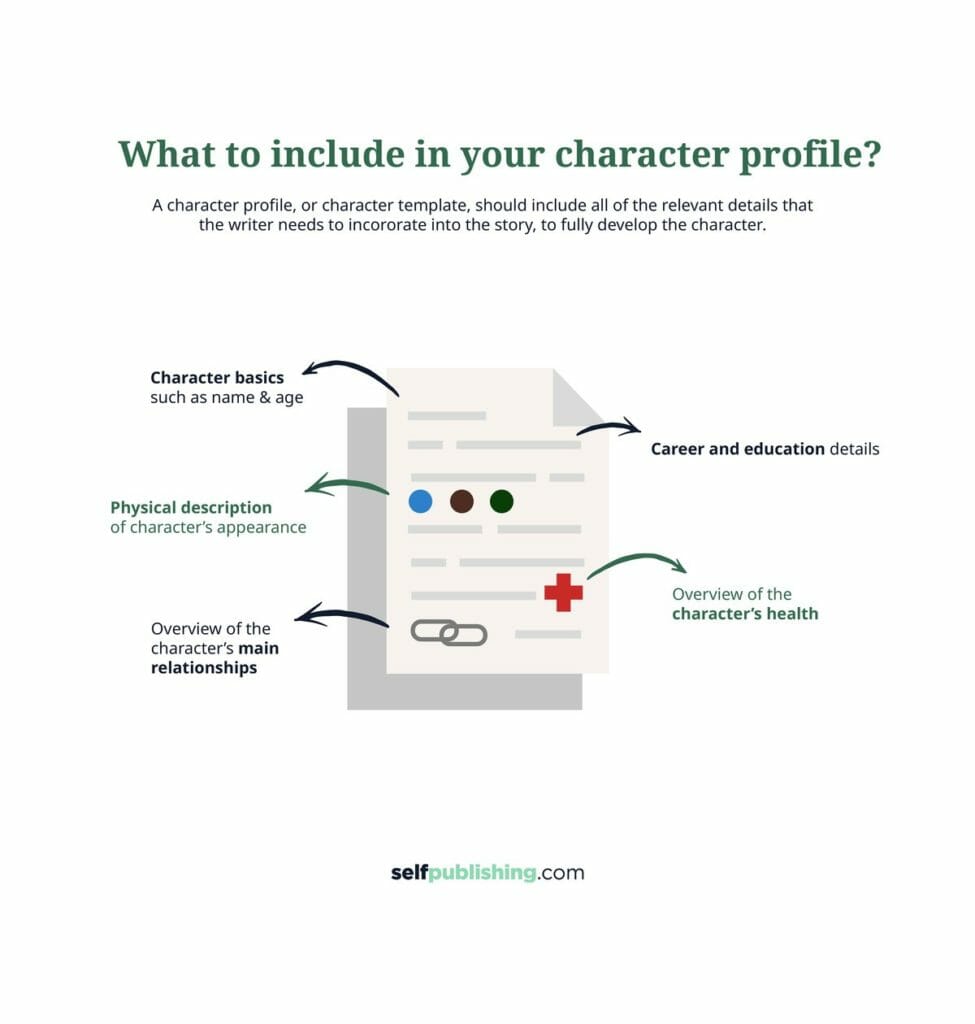
How to use this character bio template
This particular character bio template is comprehensive, and designed to be used as an in-depth resource with more advanced character development questions. Novel and short story writers will benefit from this character sheet template to create a full character bio.
Fill this template out fully for each of your main characters (protagonist and antagonist), and use the sheet as a reference for your writing.
Click here to jump to the Character Template!
It’s best to complete the character bio template once you have your story’s outline, but before you actually start writing your rough draft. If you’ve already started writing your rough draft, that’s okay – you can still use this character bio template and it will be helpful as you edit and complete your draft.
Read this article if you want to learn more about how to write a book outline.
How to use a character bio template to improve your character’s development:
- Start with a good idea of your character’s creation, like who they are and what their purpose is in your story.
- Know your character’s flaws, motivation, main goal, and purpose.
- Begin filling out the basic section in your character bio template.
- Get clear on the physical descriptors of your character.
- Fill out health section of the character bio template.
- Next, build out your character’s career details.
- Think about what your character prefers.
- Dig into the family history in the character’s bio.
- Then, move on to the relationships section of the template.
- Narrow down your character’s main life stages.
- Develop the character’s perspectives and views of the world.
- Next, build the character’s story development.
- Review the full character bio template to make sure every detail connects, and that there are not any inconsistencies.
- Practice writing from your character’s perspective to get a natural feel for the way your character thinks and acts.
- Practice writing about your character from different perspectives (as a narrator, as a friend/lover/enemy of the character).
- Repeat all the above steps for any major characters in your story.
- Reference your completed character bio template as you begin writing.
Following the tips above will help you to develop a realistic character that readers will be invested in.
Don’t just share this character bio template directly with your reader – it is meant to be a complete guide for you as you write about who your character is, and how he or she affects the story.
This character bio template serves as a skeleton for developing a realistic character, so you should be able to answer each question. You need to be able to answer everything about your character, but your reader only needs to know the details that help tell the story.
These character development questions are comprehensive, so this doesn’t mean you need to tell your reader everything about your character. Only give your reader what they need to know about your character as it pertains to your story.
If you’re writing a genre or story that requires more questions, feel free to add more as you see fit! For example, if you’re writing a sci-fi novel, maybe you need to answer more questions about your character’s species, or the special powers that they possess.
As you write, you’ll want to have a copy of your completed character bio template nearby so it can be retrieved easily and referenced. This will help you tell your story more accurately, by avoiding little mistakes or inconsistencies in your plot and story setting.
For example, let’s say you start the story by describing your character as a vegetarian, but later on have your character order a hamburger at a restaurant. This is a detail that many engaged readers will notice!
Click here to jump to the Character Template!
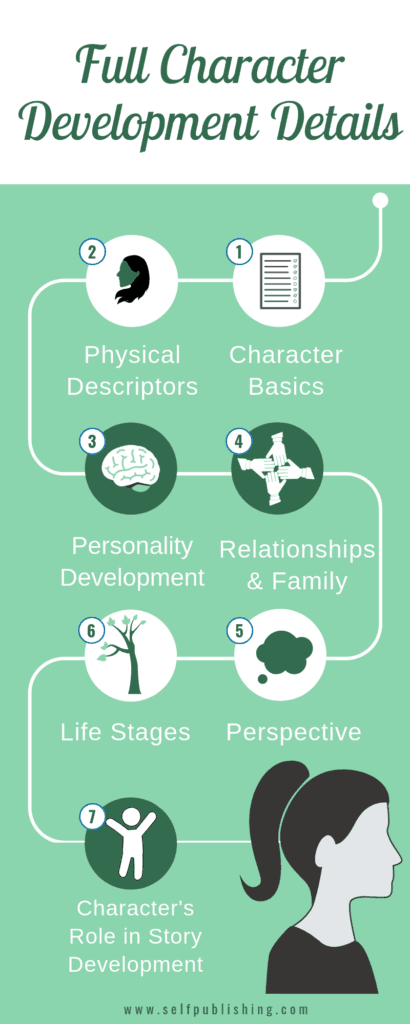
Tips for using this character bio template in your writing:
- Complete the character bio after your outline is completed. Start filling out the character bio sheet after you complete your story outline, but before you start fully writing your chapters. This will ensure you have a solid idea of what details make sense based on your story’s main events, but still gives you the opportunity to incorporate the small details into your actual story.
- Use the character template as a reference guide when writing. Don’t just fill out the template and share it with your readers. This exercise is meant for you, as the author, so that you can fully develop all the intricacies of your character, and incorporate relevant details to shape who your character is, and their purpose in the story.
- Don’t skip any questions that can be answered. Answer as many questions about your character as possible. Obviously, if a question does not apply to your character (like if they are a child and do not have any past relationships), skip it. But don’t avoid questions simply because you don’t want to think. Cutting corners in this way will reflect in your character’s development.
- Only give your reader what they need to know when you’re writing. Just because you answer every question in the character development sheet, doesn’t mean that your reader needs to know all of those details. Only give what’s necessary, and what will help your reader understand your character better.
- Add more questions as needed. This character bio template is meant to be a starting point for you. If you need to add more questions, do so, especially if you’re writing a genre like hard science fiction where your characters are non-human.
- Think about the small details. Once you start writing, the character bio template will bring value to your dialogue, scene setting, and plot. Don’t be afraid to focus on the small details.
200 questions for your character bio template
Here are the questions you should answer about your character in order to bring them to life:
Character bio template basics
Begin by answering these basic questions about your character. These character development questions are the surface-level facts that you can use to start building your character.
These are the essential facts to fill out for your character, such as name, birthday, race, gender, etc. This section should be particularly quick for you to fill out since you most likely know all of these details for your character already. These questions help show your character’s development on a surface level.
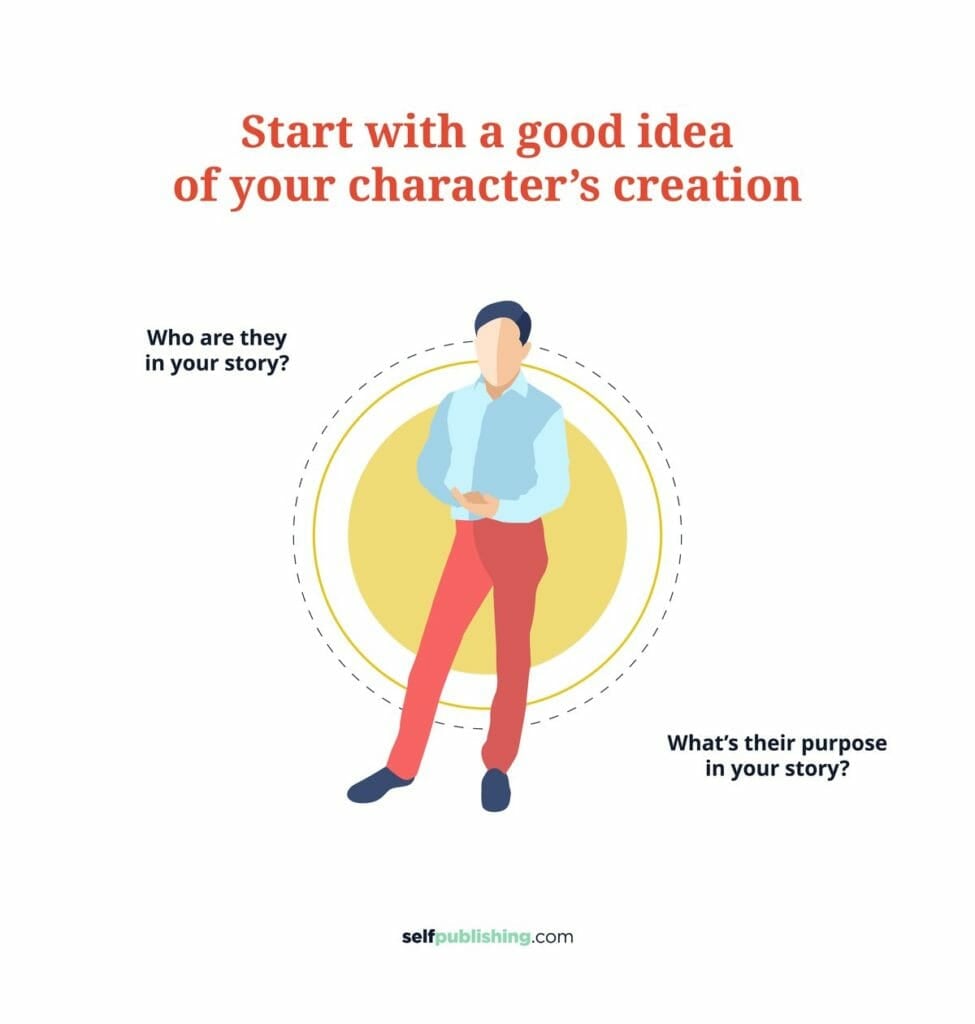
These are the basic questions for your character bio template:
- What is your character’s name?:
- Do they have any nicknames?:
- What is the meaning/significance of their name?:
- What is the character’s gender?:
- How old are they?:
- When is their birthday?:
- Do they have a death day?:
- What is their zodiac sign?:
- Where do they live?:
- Where were they born?:
- What is their ethnicity?:
- What is their nationality?:
- What is their race/species?:
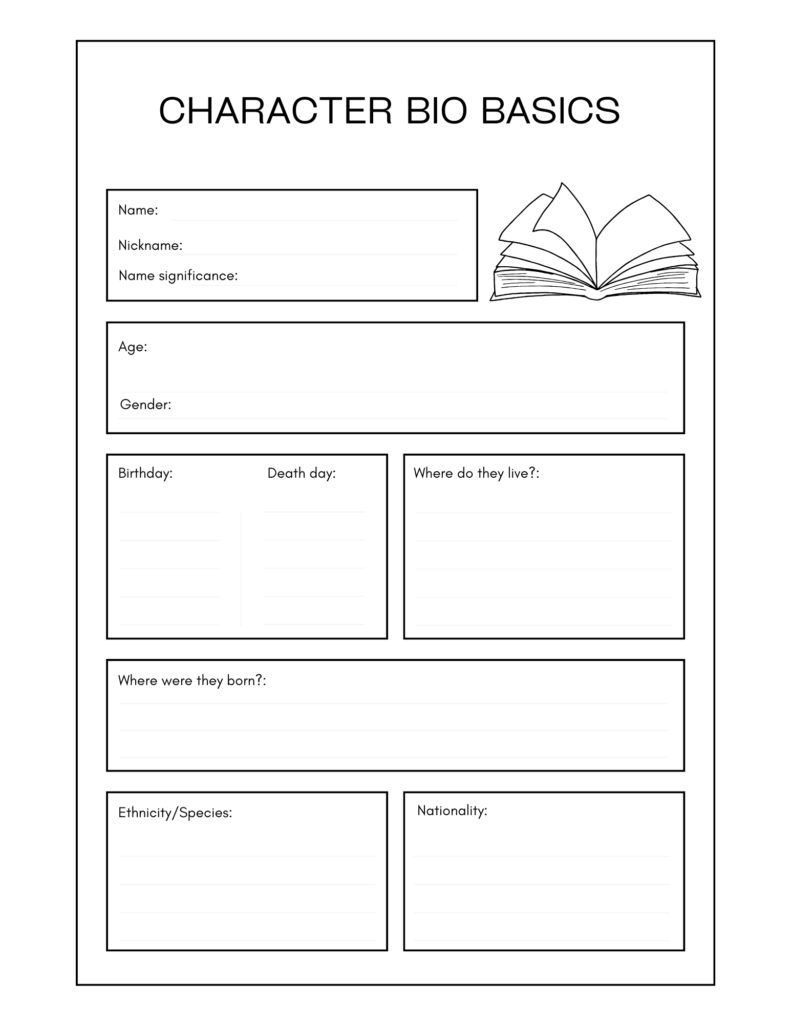
Physical descriptors
Now you can start building out your character’s physical appearance. These are external questions that will paint a physical description, so your reader can envision what your character looks like.
The physical attributes for your character bio template are important because they will also help you write vivid descriptions and actions in your book.
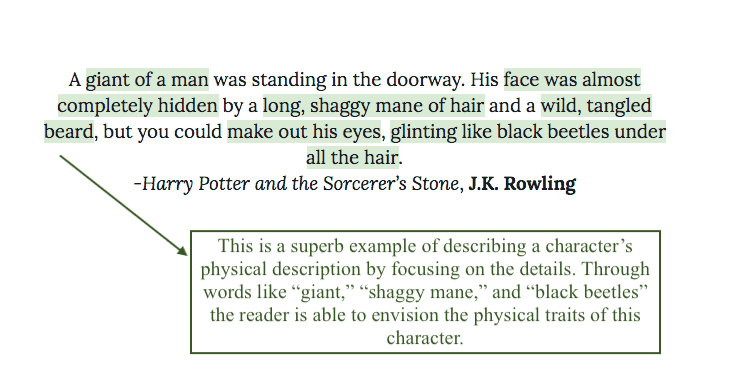
These are the physical appearance questions for the character bio template:
14. What is their physical appearance?:
15. What is their skin tone?:
16. What is their complexion?:
17. What is their natural hair color?:
18. What is their height?:
19. What is their weight?:
20. What is their body type?:
21. What is their build?:
22. How is your character’s posture?:
23. Do they have any birthmarks?:
24. Do they have any scars?:
25. Which is their dominant hand?:
26. What age does the character appear to others?:
27. Do they have a dyed hair color?:
28. What is their usual hairstyle?:
29. Do they have any tattoos? What is the meaning behind them?:
30. Do they have any piercings?
31. What is their makeup style (if any)?:
32. What is their clothing style?:
33. What is their clothing size?:
34. What is their shoe style?:
35. What is their shoe size?:
36. How is the appearance of their nails?:
37. How are their eyebrows shaped?:
38. What do their facial features look like?:
39. What is the character’s face shape?:
40. Do they have facial hair?:
41. What does their voice sound like?:
42. What distinguishing feature about them do people notice right away?:
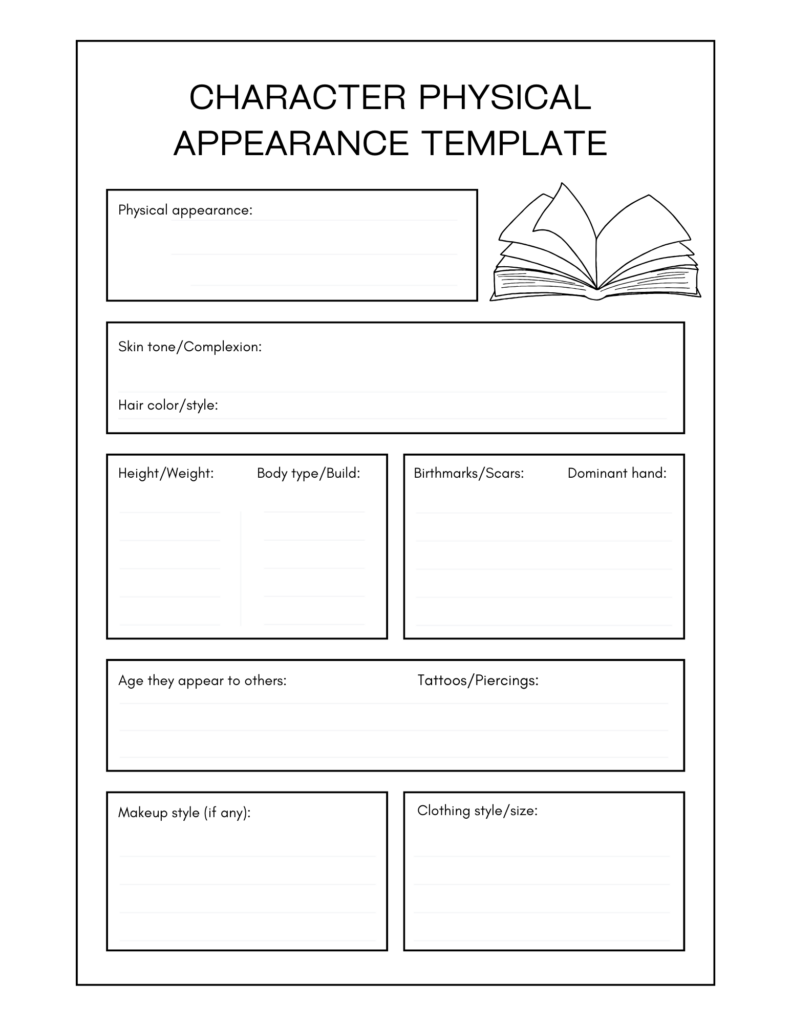
The character’s personality
Now it’s time to start scratching beneath the surface to better understand the type of personality the character has. These character development questions focus on describing the personality traits within the character’s demeanor as they are in the present time of the story.
For example, most people who are naturally introverts will always be introverts. But, maybe your introverted character has only recently developed a habit of talking to people on the subway as they commute to work every day.
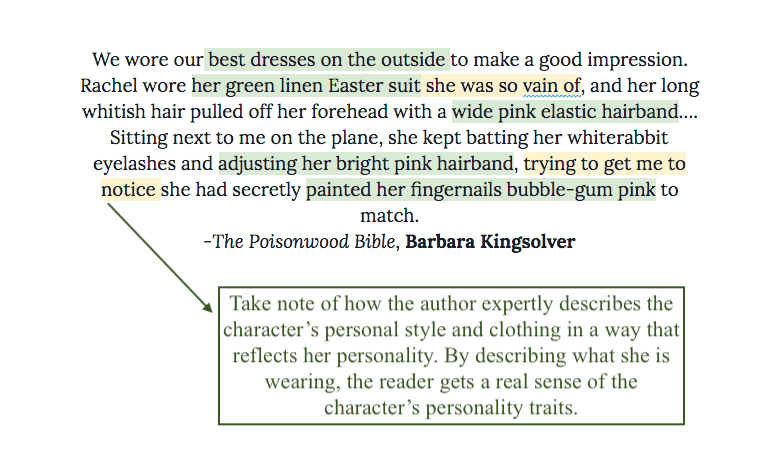
These are the personality questions for the character’s development:
43. Are they an introvert or extrovert?:
44. What are their personality traits?:
45. What is their MBTI personality type?:
46. Are they an optimist or pessimist?:
47. How is their temperament? Are they generally hot-headed, or cool as a cucumber?:
48. What mood are they often in?:
49. What everyday attitude does your character have?:
50. What are their strengths?:
51. What are their flaws?:
52: What are their mannerisms?:
53. What are their habits?:
54. Are they an early bird or a night owl?:
55. Do they have any pet peeves?:
56. Which of the 7 deadly sins does the character most represent?
57. Which virtue does the character possess most?:
58. What are the character’s weaknesses?:
59. What are their strengths?:
60. Are they expressive? How do they express themselves?:
61. Are they ruled by heart or mind?:
62. What is their mindset?:
63. What is their philosophy?:
64. What are they motivated by?:
65. What words or phrases does the character often say?:
66. What is their life motto?:

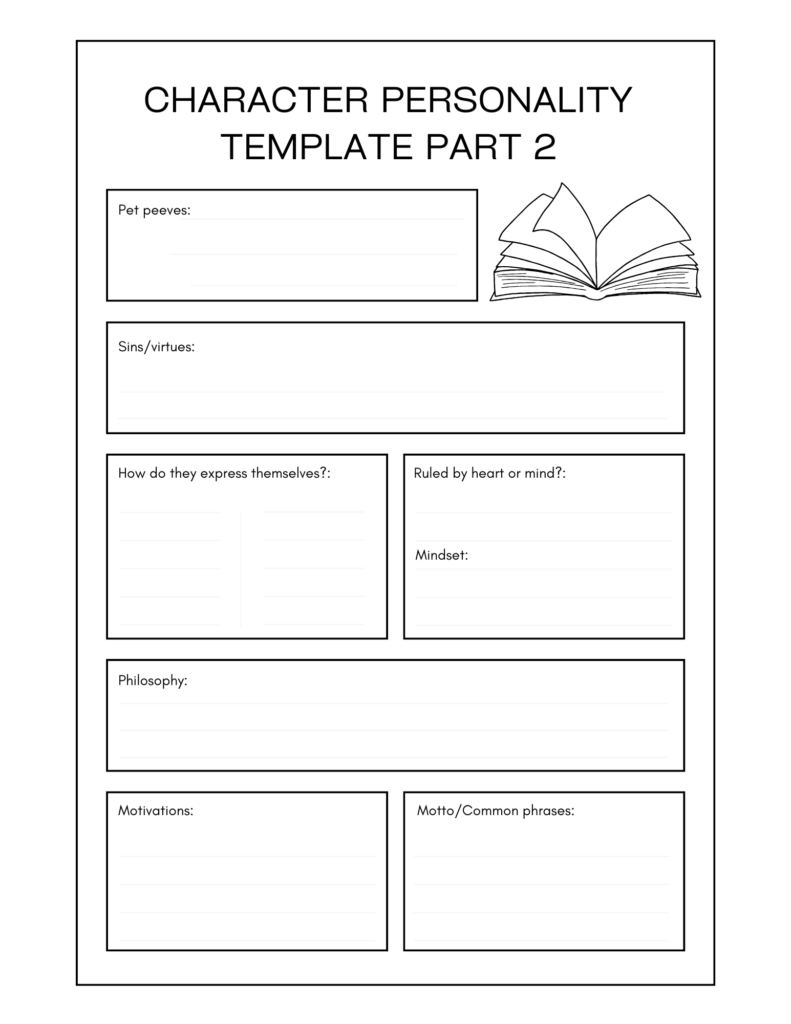
Character health bio
This section is all about your character’s health. It covers everything from mental and physical health, to major surgeries, to allergies.
If certain questions don’t pertain to your character, feel free to skip them. Or, if anything needs to be added, do so. Make this section as relevant to your character as it needs to be.
These are the health questions for the character bio template:
67. Is your character more active, or sluggish generally?:
68. Does your character often forget people’s names, or do they have a photographic memory?:
69. Is your character impaired in any way?:
70. What is your character scared of?:
71. Does your character have any addictions?:
72. Are they fast learners? Do they have poor problem-solving skills?
73. Is your character mentally tough? What are their mental strengths?:
74. In what aspects is your character mentally weak?:
75. What are their physical strengths?:
76. What are their physical weaknesses?:
77. Do they have any major past illnesses?:
78. Have they had any surgeries?:
79. Have they been in any accidents?:
80. Is your character emotionally stable?:
81. Do they have any allergies?:
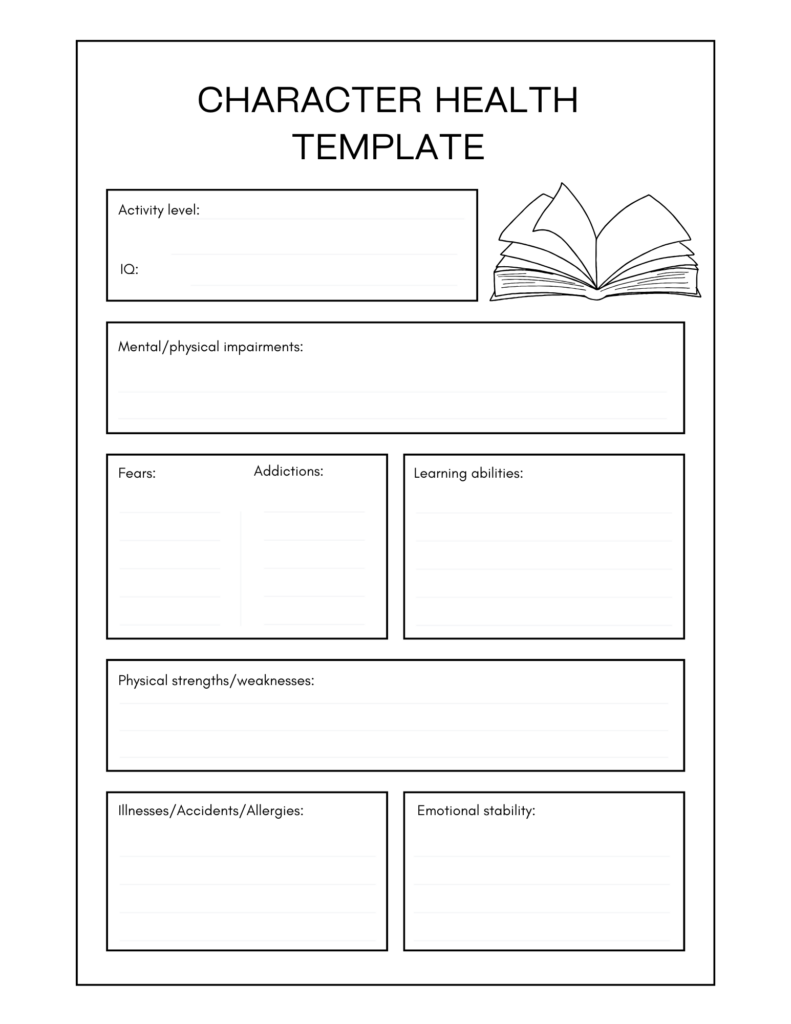
Career details
Now it’s time to cover what your character does for a living – or how they spend the majority of their time. Is your character making a living doing a job they hate, but attending night school to get their dream job?
A person’s choice of career, or their type of dream job, says a lot about that person’s qualities and interests, or lack thereof. That’s why it’s important to add career questions to your character bio template.
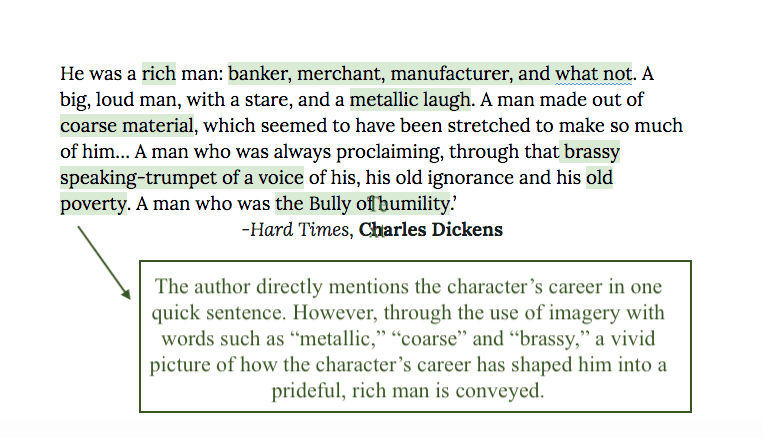
These are the career questions for the character bio template:
82. What is their job title?:
83. What company do they work at?:
84. What type of career do they have?:
85. What is their education level?:
86. Did they go to college? Where? For what?:
87. How is their work ethic?:
88. What is their job history?:
89. What is their income?:
90. What political party/organizations do they belong to?:
91. Do they do any volunteer work?:
92. What is their dream job?:
93. What job would they do poorly?:
94. How is their job satisfaction?:
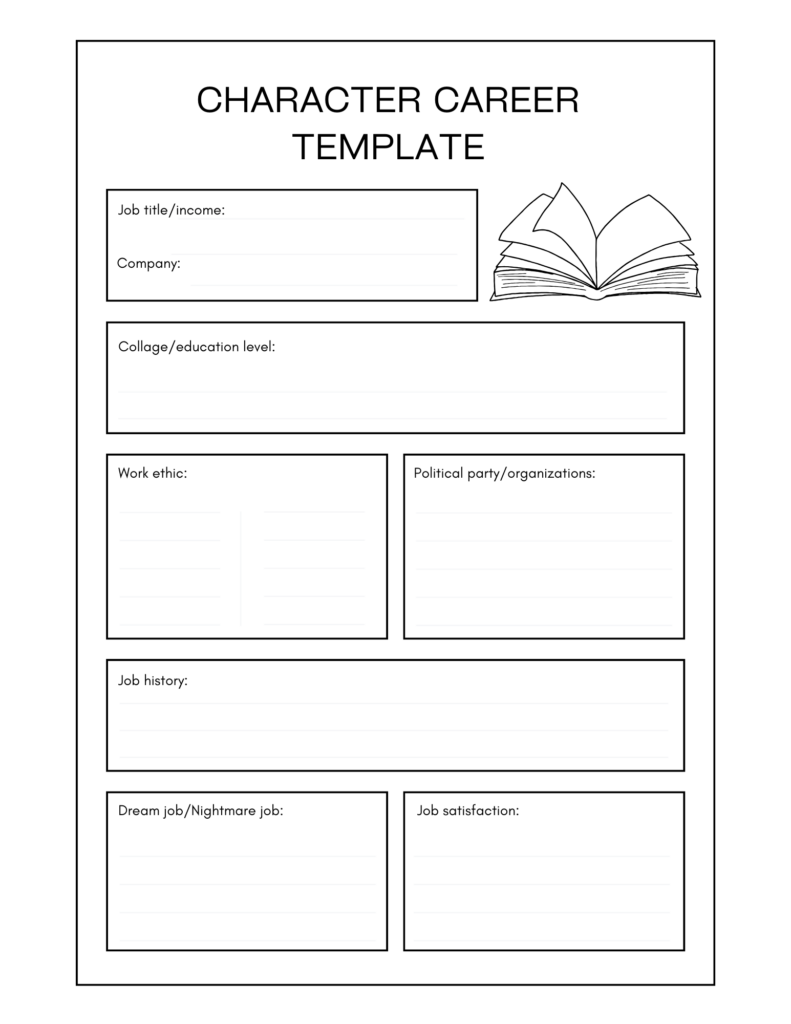
Character preferences
Everyone has their likes and dislikes, from books to activities to the time of day. By answering all of these questions about your character in your character bio template, you’ll be able to build up a person that’s realistic and believable.
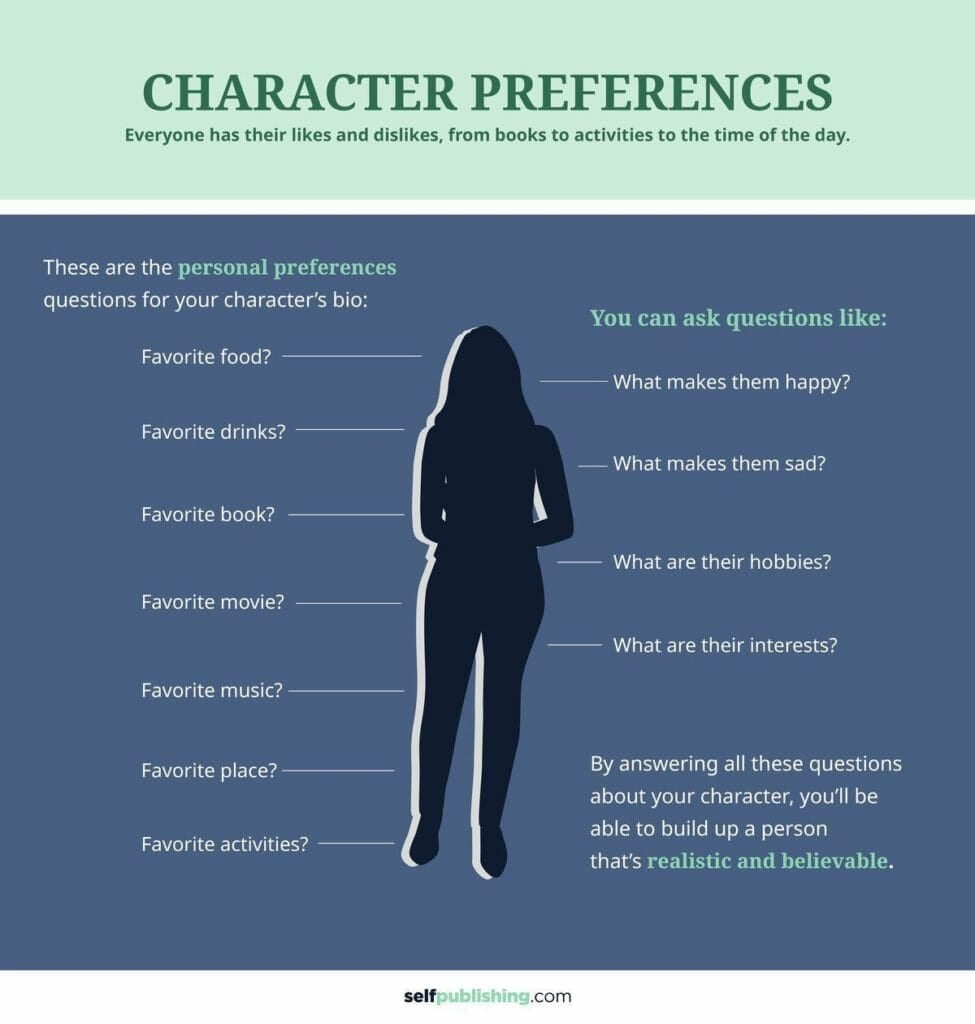
These are the personal preference questions for your character bio template:
95. What is your character’s diet like?:
96. What are their favorite foods?:
97. Favorite drinks?:
98. Favorite movies?:
99. Favorite music?:
100. Favorite books?:
101. Favorite animal?:
102. Favorite place?:
103. Favorite activities?:
104. Favorite time of day?:
105. What makes them happy?:
106. What makes them sad?:
107. What are their hobbies?:
108. What are their interests?:
109. What do they love to do?:
110. What do they hate to do?:
111. What are they inspired by?:
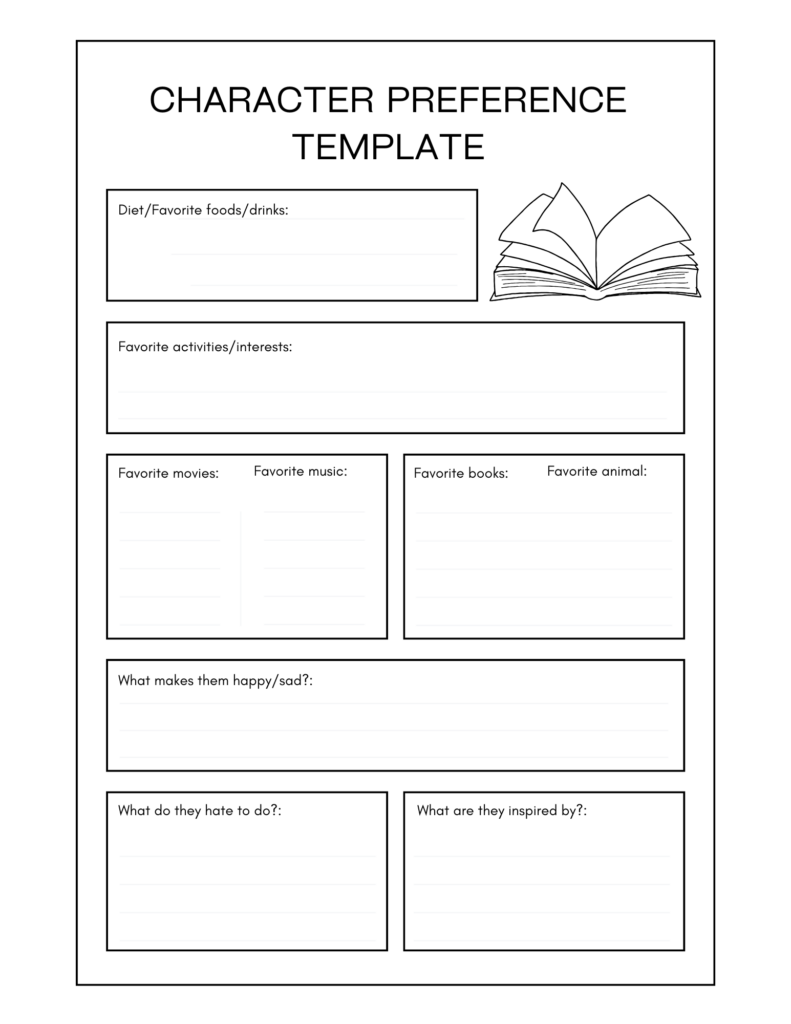
Family life of the character
Let’s face it – family, or a lack thereof, shapes a person. The same is true about your character.
This section is all about your character’s family life, from their parents to extended family, and even pets.
By knowing the family your character came from, you’ll also learn a lot about your character and why they are the way they are.
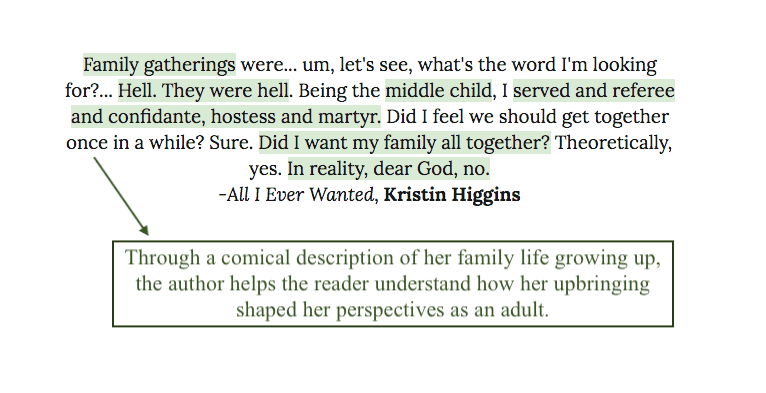
These are the family life questions for the character bio template:
112. Who were they raised by?:
113. What is the status of their parents?:
114. What is their mother’s name?:
115. Mother’s age?:
116. Mother’s background?:
117. What is their father’s name?:
118. Father’s age?:
119. Father’s background?:
120. How is their relationship with their mother?:
121. How is their relationship with their father?:
122. What is their parenting type?:
123. Are they an only child? First, middle, or youngest?:
124. How many siblings do they have?:
125. What is their relationship with their siblings?:
126. Do they have kids of their own, or do they want them in the future?
127. What are some interesting details about their other relatives?:
128. Is their family close-knit or distant? How has family life shaped the character? Do they have any sibling rivalries, or are they best friends with a particular sibling?:
129. What do they like most about their family?:
130. What do they like least about their family?:
131. What are their children like (if applicable)?:
132. Do they have any pets?:
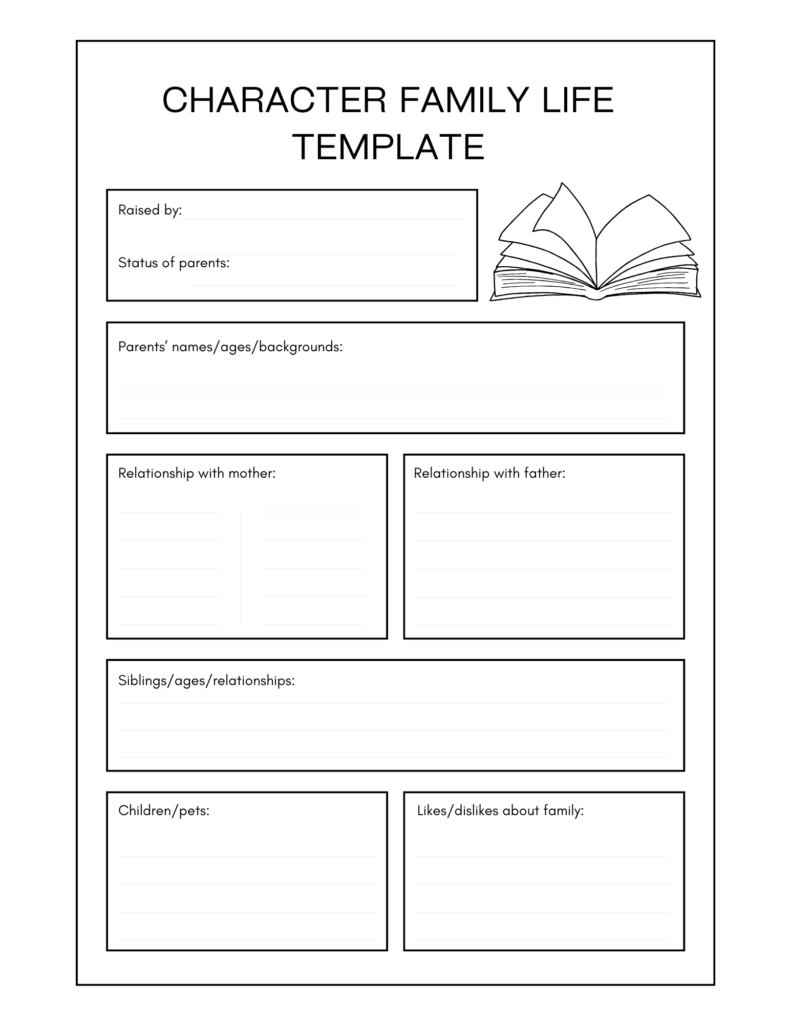
Character bio relationships
In this section, you’ll be answering all the questions that have to do with your character’s relationships – from friends to lovers to enemies.
Think about all of the influential relationships your character has been involved with. Each person, and each relationship, is different, so keep that in mind as you fill out this section of the character bio template.
Each of us becomes involved with people who teach us lessons, whether these individuals stay in our lives long or not. The same is true for a well-developed character!
Click here to jump to the Character Template!
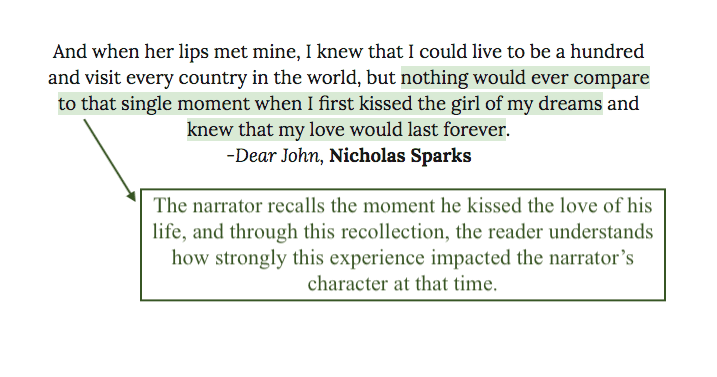
These are the relationship questions for the character bio template:
133. Who are their best friends?:
134. Who is their worst enemy?:
135. Do they have many acquaintances or a few close friends?
136. What is their sexual preference?:
137. Their sexual orientation?:
138. What is their relationship status? Are they happy with it?:
139. Are they married? Divorced? Widowed?:
140. Who was their first love?:
141. Who is their current or aspiring love?:
142. Are there any exes that influenced the character, either positively or negatively?
143. Who does your character love best in terms of their friends and relations?:
144. Who does your character dislike in terms of enemies and acquaintances?
145. Who knows the character best?
146. Who is closest to your character?
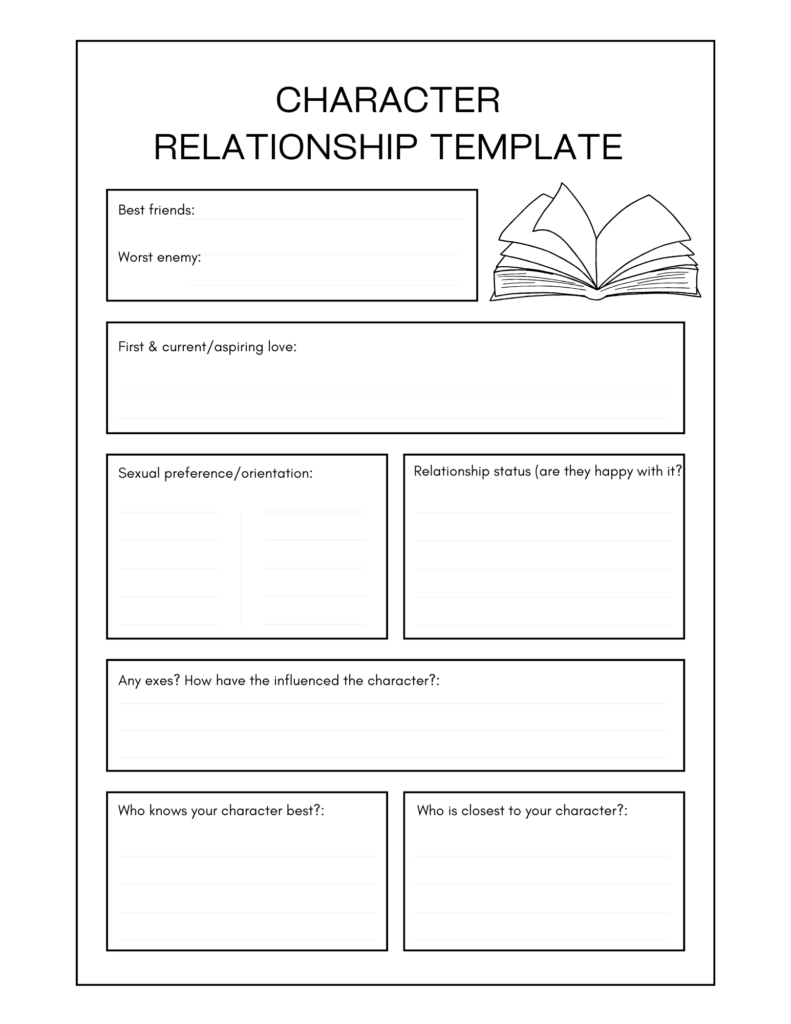
Character template life stages
It’s time to cover your character’s life stages. If your character is an adult in your story, then you’ll want to fill out quick details on each question in this section. If your character hasn’t reached a certain stage yet, just skip that part.
For each life stage, you can write a few sentences to describe the overall time period for the character. Don’t feel the need to list out every single thing that happened to your character in a certain life stage – unless you want to.
These are the life stage questions for your character bio template:
147. What was their childhood generally like?:
148. Did anything significant happen in their childhood?:
149. What were their teenage years like? Did anything significant happen?:
150. What were they like as a young adult? Did anything significant happen?:
151. Have there been any significant events in their adulthood?:
152. When did they really grow up and come into themselves? (Their “coming-of-age moment”):
153. Are there any important moments or experiences that shaped them?:
154. How have they changed as a person throughout their life?: Were they raised as a spoiled only child, but later became a Buddhist monk?:
155. Are there any major regrets the character has from their life?:
156. What are the biggest life lessons your character has learned?:

Character perspectives
Next, we’ll go through the questions that will help show us how your character thinks about the world and perceives things.
This is important because it helps shape your character’s mindset, especially if you are narrating the character’s inner thoughts and dialogue.
Filling out this section of the character bio template will also help you as you practice writing in your character’s point-of-view, and will give you a sense of your character’s thought process, and how their mindset affects their actions.

These are the perspective questions for the character bio template:
157. What are your character’s religious beliefs?:
158. How was their upbringing?:
159. What are their core values?:
160. How are their morals? What does s/he believe is evil? What does s/he believe is good?:
161. What would your character risk their life for?:
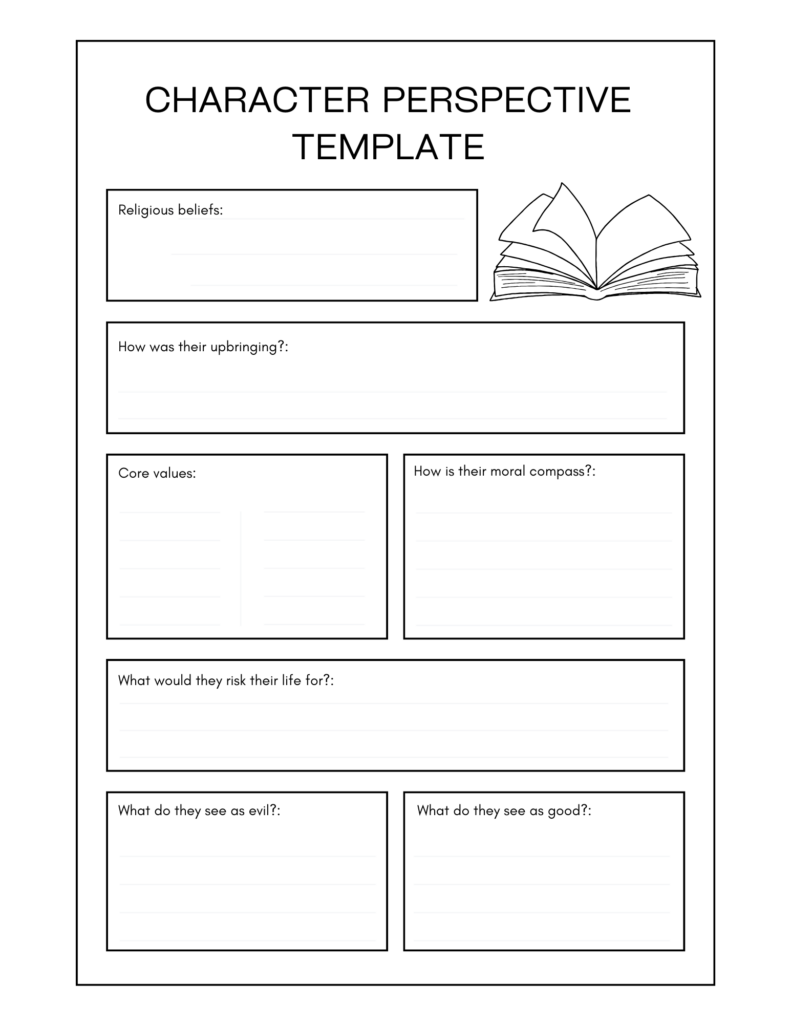
Character’s story development
Now it’s time to answer all of the questions that have more to do with your character’s thoughts, actions, and role within your storyline.
You need to know what’s driving your character in the story, and what’s getting in their way. Answer each one of these questions as it relates to your story.
For example, when describing the character’s main goal, don’t answer it in terms of their entire life’s main goal – think of the main goal in terms of your story.
Maybe your character’s main goal is to live without regrets. But how does that relate to your story? You need to make it more specific to your plot.
Maybe your character’s main goal within the context of your story is to help hide persecuted children, even if it means death and dishonor.
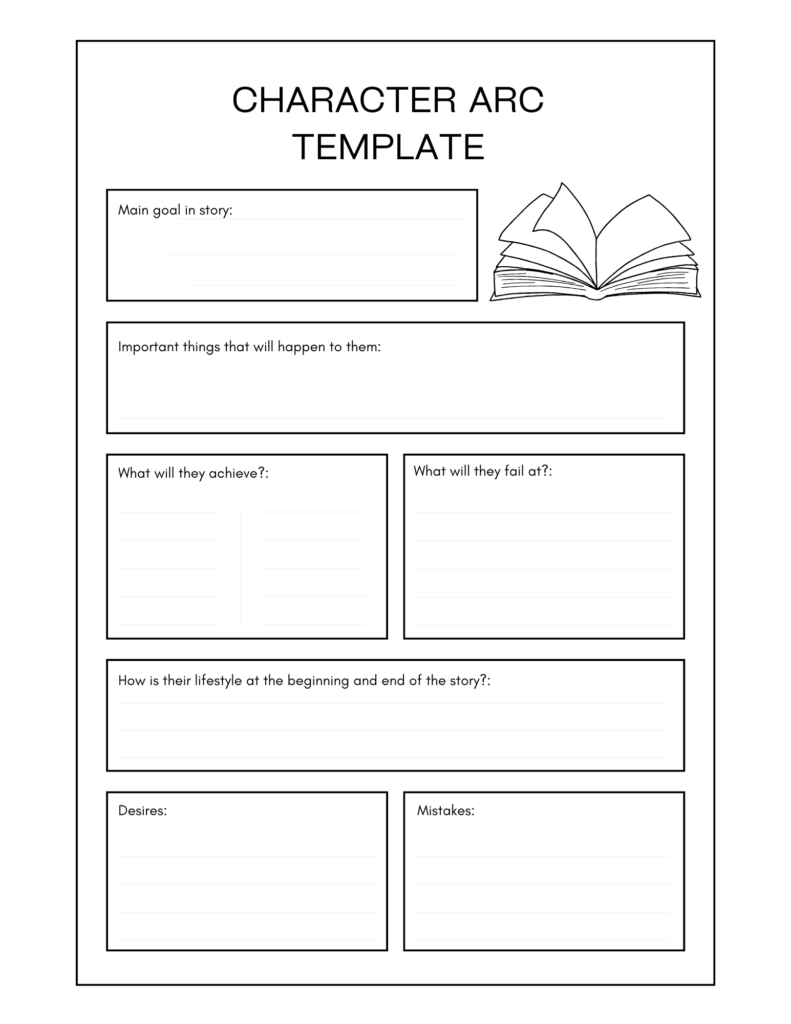
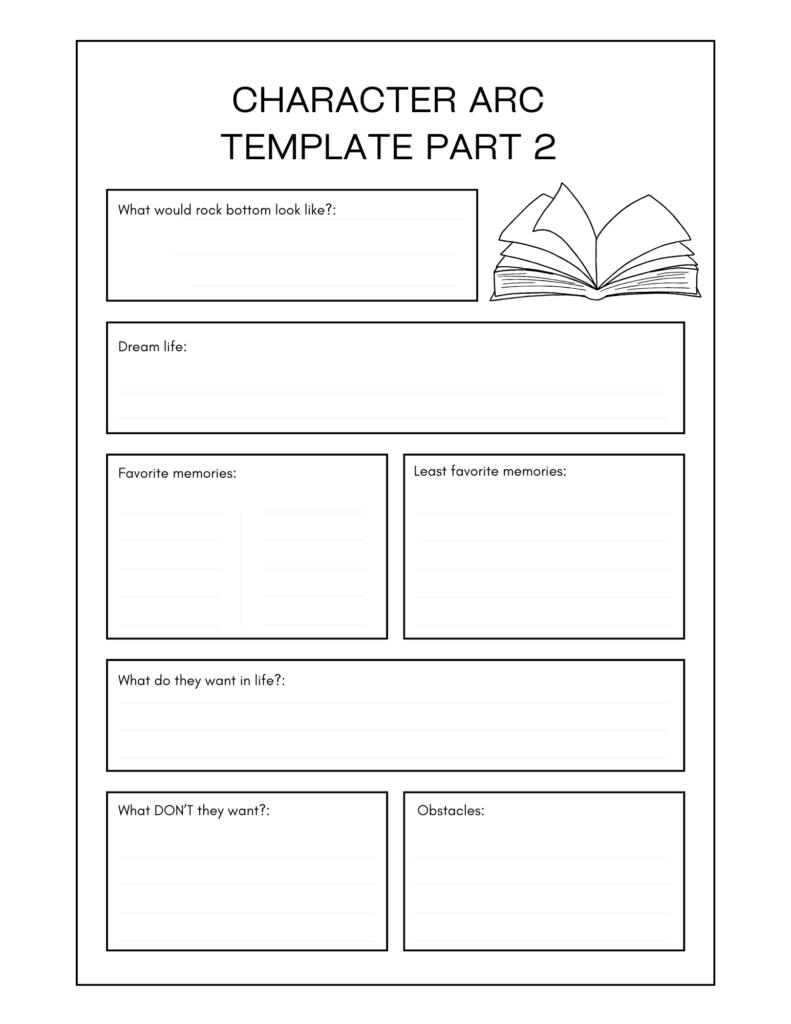
These are the story development questions for your character’s development:
162. What important things will happen to the character in your story?:
163. What will they achieve?:
164. What will they fail at?:
165. What is your character’s lifestyle like as it pertains to your story’s time period or setting?:
166. What are some traits your character will possess during your story?:
167. What culture do they identify with?:
168. What is their main goal in the story?:
169. What are some minor goals they have in the story?:
170. What does your character desire?:
171. What are/were their biggest mistakes?:
172. What would “rock bottom look like for your character?:
173. What is their dream life like?:
174. What is their worst nightmare?:
175. What are their favorite memories?:
176. What are their least favorite memories?:
177. What are some things they want in life?:
178. What are some things they don’t want in life?:
179. What obstacles are currently in their way?:
180. Do they have any secrets?:
181. What is their worldview?:
182. Who is their personal hero?:
183. What internal conflicts do they have?:
184. What external conflicts do they have?:
185. What do others think of them?:
186. What do they think of themselves?:
187. What do they wish they could change?:
188. What do they wish they could have?:
189. What gets them fired up?:
190. What do they cherish most?:
191. Things they take for granted?:
192. What inspires them?:
193. What do they have doubts about?:
194. What makes them feel alive?:
195. What makes them want to do better?:
196. What do they want to be remembered for?:
197. How will other people’s perceptions of them change?:
198. How will the character change?:
199. What will your character be doing by the end of the book?:
200. How will your character feel at the end of the book?:

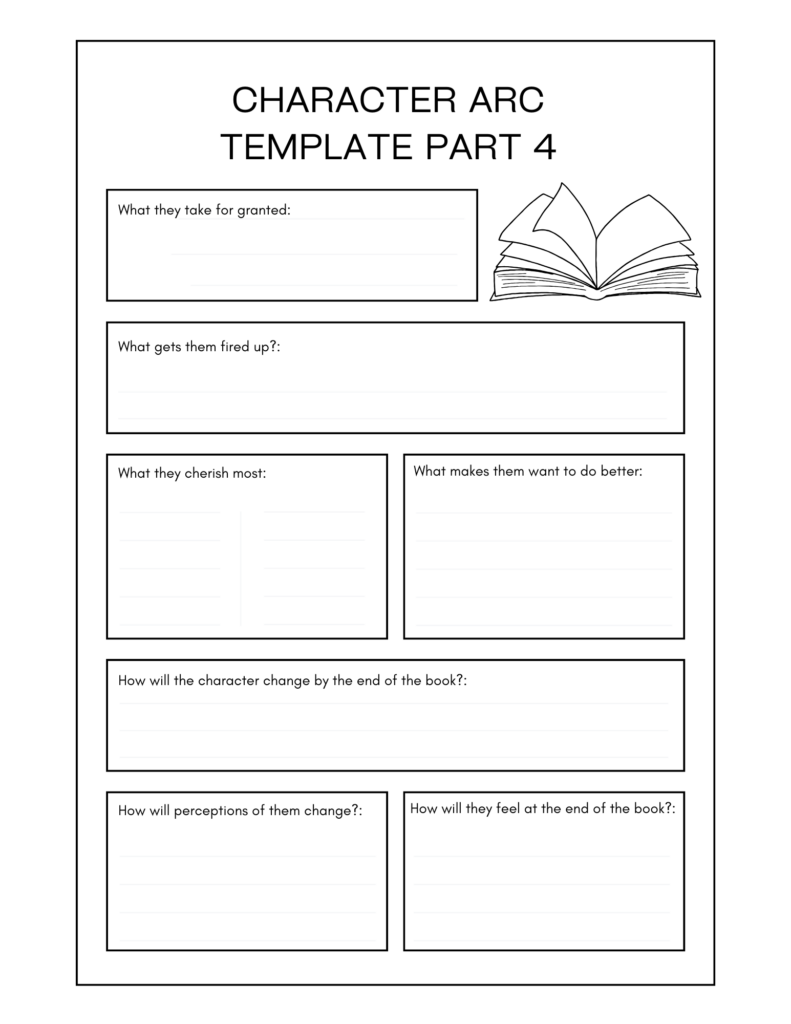
Character bio template for genre characters
Now that we’ve been through the main character bio template, let’s explore some bonus content for specific fiction genres.
1. Fantasy Character Bio Questions
When you’re conjuring realms of magic, monsters and myth, the Fantasy Module zeroes in on the arcane, the legendary and the fantastical.
- What type of magic (arcane, divine, elemental) can your character wield?
- How is their magic fueled or limited (mana, runes, pacts)?
- To which magical order, guild or academy do they belong?
- What’s the history behind their signature spell or ability?
- Do they carry an enchanted item? Describe its origin and power.
- Have they ever been cursed or suffered a magical backlash?
- Which mythical creature do they fear, revere, or command?
- How does prophecy or destiny influence their choices?
- What deity, spirit or pantheon do they honor (if any)?
- How does their magical heritage (bloodline) affect others’ expectations?
- What rituals or cultural rites shape their use of magic?
- Do they have a magical familiar or spirit companion?
- What taboo or forbidden magic have they dabbled in—or sworn off?
- How do political factions view and control magic in their world?
- Which magical school or theory fascinates them most—and why?
- How did they first discover or awaken their powers?
- What’s their personal “magical philosophy” or moral boundary?
- Which magical creatures or races do they ally with or oppose?
- How does local geography (ley lines, faerie glens) affect their power?
- How has their magic evolved—what’s next on their arcane journey?
Answer these prompts to weave true enchantment into your character’s backstory and powers.
2. Sci‑Fi Character Bio Questions
For characters charting starships, alien worlds and cutting‑edge tech, the Sci‑Fi Module drills into the scientific and speculative.
- What planet, space station or colony did they grow up on?
- Which FTL or warp‑drive technology do they use to travel?
- Have they undergone genetic engineering or cybernetic augmentation?
- What AI, drone or robotics companion do they interface with?
- What spacecraft or vehicle is “theirs,” and what makes it special?
- Which alien species have they allied with—or fought against?
- How do they navigate language barriers (universal translator, telepathy)?
- What advanced weaponry or energy shield do they carry?
- Have they experienced a temporal anomaly, paradox, or time jump?
- What’s their role in any interstellar conflict or peacekeeping force?
- How does the politics of spacefaring civilizations shape their mission?
- What’s their take on terraforming, colonization or resource mining?
- Which cyber‑crimes (hacking, data theft) have they faced or committed?
- What’s their personal record on zero‑G or hostile‑environment survival?
- How has faster‑than‑light travel impacted their worldview?
- What biotech or nanotech implants augment their senses or health?
- Do they hold any patents, ranks or certifications in star‑nav or astro‑engineering?
- What’s the character’s biggest fear in the void of space?
- How do they define “personhood” when AI gains sentience?
- What long-term goal drives their exploration of the cosmos?
Tackle these questions to map your explorer’s journey through the cosmos and beyond.
3. Romance Character Bio Questions
When your story revolves around hearts, desires and emotional connections, the Romance Module homes in on love’s nuances and dynamics.
- What is your character’s primary goal in love (companionship, adventure, security)?
- Which love language do they most naturally speak (words, gifts, touch, service, time)?
- What pivotal past relationship shaped their view of commitment?
- What’s their ideal “meet‑cute” scenario?
- What personal “red flags” do they worry about in themselves?
- What are their deal‑breakers or non‑negotiables in a partner?
- How do they handle jealousy, and what triggers it?
- What was their most romantic gesture—given or received?
- Do they believe in soulmates, second chances, or love at first sight?
- How do family and cultural expectations influence their dating?
- What’s their biggest vulnerability when opening up to someone?
- How do they balance relationship needs with career or duty?
- What’s the “perfect date” that would sweep them off their feet?
- How have past heartbreaks built walls or taught them resilience?
- What role do friends play in their romantic decisions?
- How do they show affection in private versus in public?
- What keepsake or memento from a past love do they secretly treasure?
- How do they envision a long‑term partnership (travel‑driven, home‑focused, etc.)?
- Which romantic tropes (enemies‑to‑lovers, friends‑to‑lovers) resonate with them?
- What’s their personal “love arc” goal by story’s end?
Work through these prompts to trace your hero’s romantic hopes, fears and unforgettable moments.
Now that you’ve quickly read through each section of the character template, your brainstorming wheels should be turning as you start to hone in on certain questions about your character that you hadn’t thought of before.
Once you’re ready to start, you can use the blank template below to fill out for each one of your main characters. Remember – keep a copy of your character template sheets nearby for reference as you begin writing!
Make the most of your character bio template
So there you have it – your very own comprehensive character bio template. Remember, it doesn’t matter what genre you are writing about. Every book should have well-developed characters that come alive through using writing strategies, techniques, and literary elements.
At the heart of every well-written story is a believable character that readers are engaged with and connected to. To create that character, you want to make them as realistic as possible, and you can do that with the help of a character bio template.
























